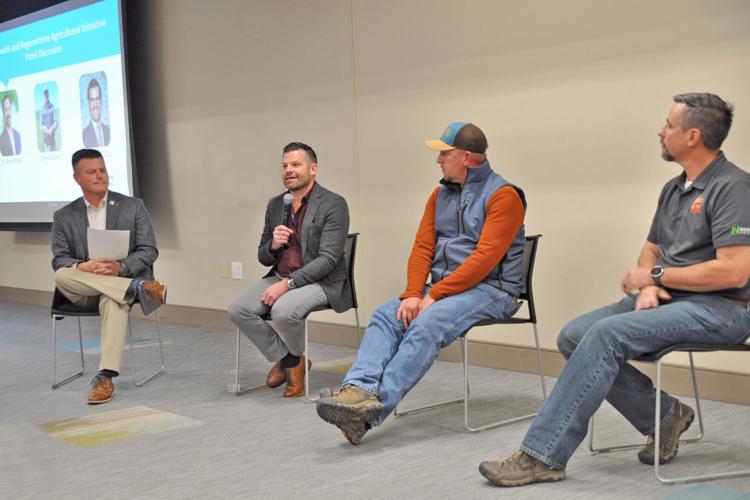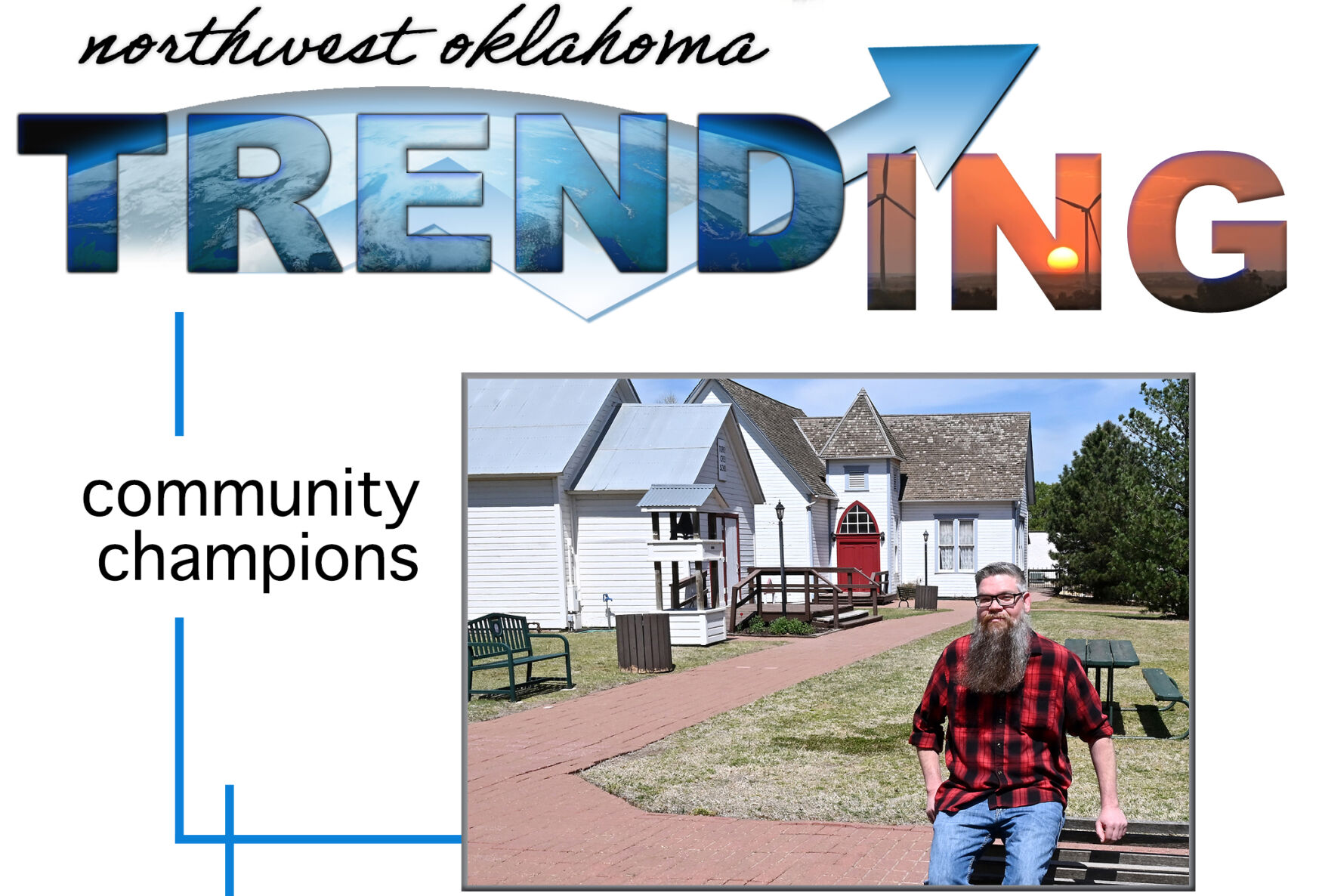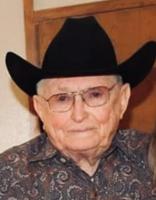The application of advanced technology to improve crop production, referred to as precision agriculture, has a counterpart in the dietetics field, which consists of using science and data to fine-tune nutritional recommendations.
Where and how the two spheres overlap was explored by a diverse three-member panel of agriculture experts at the annual meeting of the Oklahoma Academy of Nutrition and Dietetics, held in mid-April in Oklahoma City. Oklahoma Wheat Commission organized the panel in response to surveys from dietitians expressing interest in wheat production practices.
To kick off the lively hour-long discussion, Oklahoma State University crop precision management professor Brian Arnall set out to demystify buzzwords like sustainability, ecological and regenerative, which are confusing to many people.
All of these terms refer to something more basic — using science to figure out how to do things better, he said.
“There are new terms for it, like regenerative agriculture or soil health, but from our standpoint, we’ve always been striving to improve by using new tools and techniques,” he said. “It’s not necessarily a nutritional thing. What we’re doing is we’re making the food supply more reliable.”
Abundance and healthfulness can and do co-exist, he emphasized.
For more than a century, OSU has been growing wheat organically side-by-side with conventionally grown grain at a research plot in Stillwater for comparison purposes.
“We can produce bread from both lines with very good nutritional content,” he said.
However, as wheat becomes higher yielding, a dilution effect does occur.
“As our yields go up, that tends to dilute the nutrients,” he said. “That’s why we’re looking for methods to get more nutrients into the grain.”
Protein, zinc and iron are all currently the target of ongoing studies.
“We want to continue to increase yield, but if we can put more zinc into each wheat berry, with minimum cost, then down-chain we’ll have a better loaf of bread,” he said. “Maybe we place the zinc in the soil, or it might be applied directly to the plant. We are looking at all possible methods.”
Brady Sidwell is a farmer, brewer, grain merchandizer and founder of Chisholm Trail Milling in Enid. He joined the panel two weeks after attending the World Food Technology Conference in San Francisco.
The latest tech is being deployed for everything from identifying biologically active food fortification compounds to exploring the mysteries of the microbiome.
“So many entrepreneurs are trying to crack the code on this,” he said.
With awareness of the connection between food and health increasing, it’s time to view ag products as ingredients rather than just commodities, he said.
As owner of a grain elevator facility, Enterprise Grain of Kremlin, he invested $30,000 in a German-made protein testing machine as a step in that direction.
“How are farmers paid?” he asked. “It’s based on yield. There needs to be a quality component to how they get paid. If buyers are paying me a premium, I should share that premium back with the farmer.”
Balancing the benefits
James Blom, a certified crop adviser with Oklahoma Conservation Commission who grew up in Enid and has been involved in agriculture since high school, brought up the need to balance quality with affordability.
“Quality is one thing, but the economic things taking place now, with grocery bills going up 30 percent, is something we also have to be aware of,” he said.
Arnall agreed that most people are watching their grocery budgets closer these days.
Consistency is another area where the existing supply chain excels, he added.
“Our food is very homogenous, but it’s also extremely safe,” he said.
The emphasis on fact-based science for evaluating the trade-offs was a source of common-ground between panelists and convention attendees like Christy Howze, a clinical dietitian from Yukon who currently works for a nursing facility.
“I appreciated the science side of the discussion,” she said later. “All of us who were in that room are science based. We understand concepts like chemistry and biology, even if we’re applying it in a different realm.”
The convention agenda included sessions on artificial intelligence and using DNA tests to create customized dietary plans for individual clients.
For Howze, the discussion of supply chain challenges was also an attention grabber. Fresh on her mind are Covid pandemic shortages, some of which have continued up to the present day.
For Tawni Holmes, a registered dietitian who teaches in the nutrition department at the University of Central Oklahoma, hearing an insider’s perspective on agricultural production was eye-opening.
“Nutrition is our focus, but we’re not always thinking about their side of it or about the process it all has to go through to get from the field to the table,” she said.
Several of Holmes’ students were also in attendance. Having agricultural experts on hand was a good way to expose them to information they might not otherwise get with limited free time for extracurricular learning, she said.
“We all tend to be in our own siloes,” she noted. “That’s why meetings like these are helpful, because it gets us out of our bubble.”
Krystal Dunham, who owns a Tulsa-based consultancy called The Mother Road Dietitian, said the panel met all of her expectations and left her wanting more, a feeling shared by many of her colleagues.
“I hope to see this conversation continue,” she said.
To that end, the organization has adopted a five-year plan to increase exposure to agriculture through guest speakers and farm tours, an educational campaign led by ag advocate Sheri Glazier, also known as the Dirt Road Dietitian. A tour is currently in the works for Southwest Oklahoma this fall.
The ag outreach effort has been extremely popular within the group.
Hollie Kirby is assisting with the educational campaign, even though she doesn’t come from a farm background.
The Yukon-based primary care dietitian said nutrition professionals need opportunities to look beyond the question of where food comes from to consider the inner workings of the food system and the challenges farmers face.
Research for resiliency
As for panelist Brian Arnall, he didn’t grow up on a farm either and never set out to become one of the country’s leading experts on precision nutrient management of crops.
“The first time I stepped on a tractor was in grad school,” he recalled following the event.
That came about because his mother worked at Northeastern Oklahoma A&M, an agricultural oriented college in his hometown of Miami, which allowed him to attend tuition-free. He ruled out animal science or agriculture education before settling on agronomy.
An offer to work for the soil testing lab at OSU solidified his path. He joined the plant and soil science faculty in 2008.
“My entire career has just been following opportunities,” he said. “I didn’t start out with a passion; I grew into a passion.”
As a member of OSU’s Wheat Improvement Team, Arnall’s role is making sure the impacts of soil conditions are considered when developing and selecting varieties.
Historically, breeders would coddle their fledgling plants with optimal inputs. Within the first few years of starting his academic career, Arnall was challenging them to manage plants more in line with the adversity that exists in the field.
As a result, OSU has been at the forefront of an innovative approach under head wheat breeder Dr. Brett Carver.
“He was one of the first breeders in the U.S. to change his mindset,” Arnall said. “We’re releasing varieties now because of his willingness to manage test plots differently. He’s finding wheat that produces better under nutrient deficiencies and wheat that has better protein.”
One example is Green Hammer, an OSU variety released in 2018.
“It came about because we were trying to grow wheat under less-than-optimum nutrient levels,” Arnall said. “It popped out to be an amazing protein producer and really resilient in how it does that.”
After the panel concluded, Arnall was headed out to fertilize a test field as part of a producer education program called Testing Ag Performance Solutions, or TAPS. The program allows farmers to experiment with emerging technologies using a competitive game-like format.
A techie at heart, Arnall believes new precision techniques, such as three-dimensional mapping of fields, ultimately benefit consumers as well as farmers.
“If we manage nutrients in such a way as to optimize yield, rather than maximize it, and make sure to place all the right nutrients in the right place, then our output has much more probability of being nutrient-dense than if we do everything based on the average,” he said.
























Commented
Sorry, there are no recent results for popular commented articles.